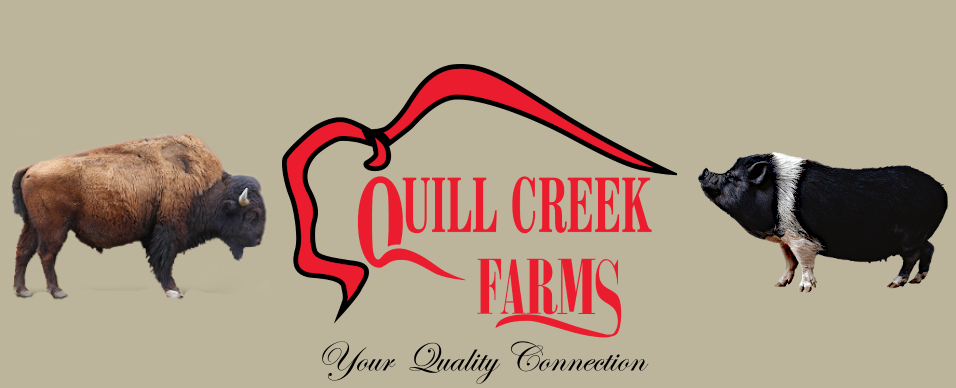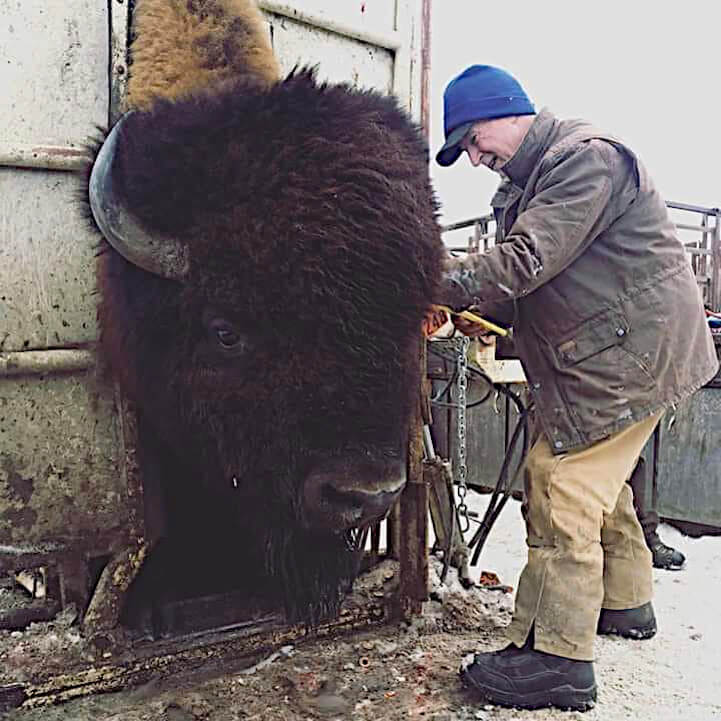

All About Bison
Although they are superficially similar, the American and European Bison exhibit a number of physical and behavioral differences. Adult American Bison are slightly heavier on average because of their less rangy build, and have shorter legs, which render them slightly shorter at the shoulder. American Bison tend to graze more, and browse less then their European relatives, because their necks are set differently.
Compared to the nose of the American Bison, that of the European species is set farther forward than the forehead when the neck is in a neutral position.
The body of the American Bison is hairier, though it's tail has less hair than that of the European Bison. The horns of the European Bison point forward through the plane of it's face. making it more adept at fighting through the interlocking of horns in the same manner as domestic cattle, unlike the American Bison which favors charging. American Bison are more easily tamed than the European and breed more readily with domestic cattle.
Bison is a deeper red color before cooking because there is no marbling (white flecks and streaks of fat within the meat muscle). Bison is said to have a sweeter, richer flavor than beef and has less fat and fewer calories than beef.
Preparing Bison:
Bison is very lean and lacks fat for marbling, so care should be taken to not overcook it.
• In general, bison should be cooked using low heat (325 °F) (162 °C) and longer cooking times.
• Braising or other moist cooking methods are recommended for bison roasts and steaks.
• For thin-sliced bison, use quick cooking methods such as broiling and pan frying.
• Cook raw ground bison to an internal temperature of (160 °F) (71 °C) as measured with a food thermometer before removing meat from the heat source. For safety and quality, allow meat to rest for at least three minutes before carving or consuming. For reasons of personal preference, consumers may choose to cook meat to higher temperatures.
• Less tender cuts should be braised (roasted or simmered with a small amount of liquid in a tightly covered pan) or stewed
Storage Times:
Purchase Bison products before any "Sell-By" dates expire. It is not important if a date expires after freezing bison because all foods stay safe while frozen. Because purchase dates are a guide to the retailer, follow these tips for safe storage and use at home.
• Follow handling recommendations on product.
• Keep bison meat in its package until using.
• It is safe to freeze bison meat in its original packaging. If freezing longer than 2 months, wrap these package with airtight heavy-duty foil, plastic wrap or freezer paper, or place the package inside a plastic bag.
• For best quality, cook or freeze ground bison or stew meat within 2 days of purchase; larger cuts such as roasts and steaks, within 3 to 5 days.
• Ground or cut-up bison meat will keep its best quality in the freezer for 4 months. Larger cuts, such as chops, steaks, legs, or loins will keep their best quality 6 to 9 months.
• After cooking, eat or freeze bison within 3 to 4 days.
The Bison Industry
North American Bison Farming and Bison Ranching is one of the fastest growing industries in agriculture today. More people are raising bison and selling bison meat and bison products. The industry demand for healthy, lean, and nutritious bison meat continues to grow. The best breeding females are currently being added to build the bison herds quickly and, on average, are worth more than bulls. Prime meat animals are worth bat least twice what prime beef demands. Bison by-products values have increased more rapidly than some meat products.
The Nature of The Bison Herd
Bison are a naturally hardy breed. They have not only survived, but thrived, on the North American continent for thousands of years, they easily adapt to a wide variety of climates. Winter cold and summer heat are no problem for this breed Bison are not a domestic animal and should not be handled as one. Low-pressure, low-stress methods are required. Today's bison producers have developed handling systems, such as the variety we offer, to safely handle herds and individuals.
Bison Reproduction
Bison can live up to a ripe old age of 40. Bison cows generally have their fist off spring at age three and a calf every year there after. Bison ranchers plan on a 20 year reproductive life, and that can reach 30 in some cases. Bison calving usually occurs between April and May. Bison have a gestation period of about 280 days and calves are normally born weighing between forty and fifty pounds. Herds generally one bull for every 10 to 15 cows.
The Original Early North American Red Meat - Bison
Why eat Bison?
1. It is tastier than beef and richer in flavor.
2. It is healthier than cow beef. It is lower in saturated fat than cow beef.
3. Bison is a great source of nutrients, it has the basics: zinc, niacin, iron, vitamin B-12, vitamin B-6 and Selenium. Bison are not handled like cows.
4. Our Bison are free range, grass eating herds.
5. Bison is one of the leanest meats and still has a lot of protein, but it is the amount of protein you get in bison meat without the saturated fat that makes Bison a great alternative to regular beef.
We Sell Wholesale - Retail Bison Meat and Wholesale Retail Berkshire Hogs, and Pork in North America
SERVICE _ INTEGRITY _ AFFORDABILITY

